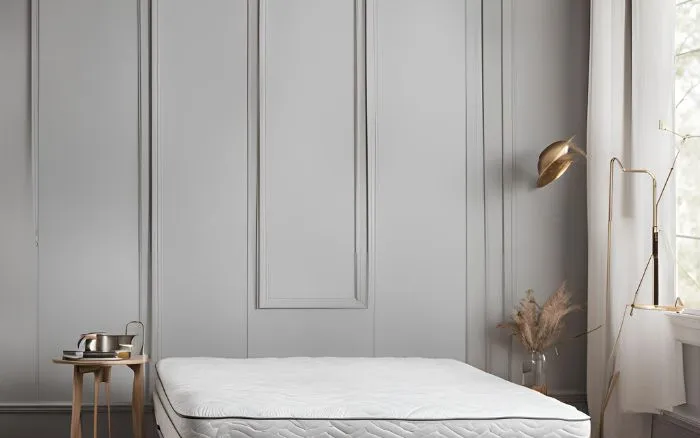The Best Air-Purifying Plants for Bedroom Air Quality

Introduction
In today’s fast-paced world, ensuring clean and purified air in our living spaces is essential for a healthy and rejuvenating lifestyle. The bedroom, being one of the most frequented and personal spaces in the home, can greatly benefit from the presence of air-purifying plants. Not only do these plants enhance the aesthetics and ambiance of the bedroom, but they also contribute to improving indoor air quality, promoting relaxation, and facilitating better sleep. In this comprehensive guide, we will explore the benefits of air-purifying plants in the bedroom, factors to consider when choosing these plants, the top air-purifying plants suitable for the bedroom environment, maintenance and care tips, and finally, a conclusion highlighting the significance of integrating these natural marvels into our living spaces.
Benefits of Air-Purifying Plants in the Bedroom
Improvement of Indoor Air Quality
Air-purifying plants play a pivotal role in enhancing indoor air quality by naturally filtering out common toxins and impurities present in the air. Through the process of photosynthesis, these plants absorb carbon dioxide and release oxygen, effectively purifying the air and creating a healthier atmosphere within the bedroom. The presence of air-purifying plants aids in reducing airborne pollutants, such as formaldehyde, benzene, and trichloroethylene, which are commonly found in indoor environments. This natural air filtration contributes to a fresher, cleaner breathing environment, promoting overall well-being and comfort.
Enhancement of Aesthetics and Ambiance
Beyond their air-purifying capabilities, air-purifying plants significantly contribute to the aesthetics and ambiance of the bedroom environment. The lush green foliage and diverse textures of these plants not only create a visually pleasing atmosphere but also foster a soothing and calming feeling, transforming the bedroom into a serene oasis. There are several key aspects to consider when exploring the enhancement of aesthetics and ambiance through air-purifying plants:
- Visual Appeal: The vibrant green hues and varying leaf shapes of air-purifying plants introduce a natural and organic visual element to the bedroom, elevating its overall appeal and creating a connection with nature.
- Texture and Dimension: The differing textures and shapes of the foliage provide a sense of depth and visual interest, enhancing the overall aesthetic of the space and contributing to a multi-dimensional environment.
- Calming Atmosphere: The presence of air-purifying plants promotes a tranquil and relaxing atmosphere, encouraging a sense of calm and rejuvenation, which is particularly beneficial for unwinding after a long day.
- Aesthetic Harmony: By carefully selecting and arranging air-purifying plants, a harmonious visual balance can be achieved, complementing the bedroom’s decor and contributing to an overall sense of peace and beauty in the space.
These decorative elements not only enhance the overall visual appeal of the bedroom but also foster a connection with nature, resulting in a peaceful and rejuvenating ambiance that is ideal for relaxation and unwinding.
Promotion of Relaxation and Better Sleep
Studies have shown that the presence of air-purifying plants in the bedroom contributes to a sense of relaxation and improved sleep quality. The release of oxygen during photosynthesis by these plants enhances the air quality and fosters a serene environment, conducive to better sleep. Additionally, the calming effect of surrounding oneself with natural elements, such as air-purifying plants, can reduce stress and anxiety, allowing for a deeper and more restful sleep. The gentle, natural fragrances emitted by certain plants further aid in promoting a tranquil and soothing ambiance, encouraging a peaceful night’s sleep.
- Plants that are particularly effective in promoting relaxation and better sleep include:
- – Lavender: Known for its calming aroma and ability to reduce stress levels, lavender is a popular choice for promoting relaxation and better sleep.
- – Jasmine: The delicate scent of jasmine has been found to improve sleep quality and increase alertness upon waking.
- – Aloe Vera: This plant not only purifies the air but also emits oxygen at night, making it an excellent choice for enhancing sleep quality.
Factors to Consider When Choosing Air-Purifying Plants
Low-Maintenance Requirements
When it comes to the low-maintenance requirements of air-purifying plants, there are several factors to consider in order to ensure that the plants are not only beneficial for air purification but also easy to care for. Here are some key points to keep in mind:
- Watering: Select plants that require minimal watering, as this makes the ongoing care much simpler. Over-watering can lead to root rot and other issues, so opting for plants that are more tolerant of occasional neglect is ideal.
- Light Needs: Choose plants that thrive in low light conditions, especially if the bedroom has limited natural light. This ensures that the plants continue to flourish without demanding direct sunlight, making them suitable for indoor environments.
- Soil Requirements: Opt for plants that are adaptable to different types of soil and do not have strict soil requirements. This allows for more flexibility in care and maintenance.
- Tolerance to Temperature Fluctuations: Look for plants that can tolerate temperature changes, as indoor environments may have varying temperatures throughout the day and night. Plants that can adapt to these fluctuations will require less intervention to maintain a stable growth environment.
By considering these factors, it becomes easier to select air-purifying plants that not only contribute to a healthy indoor environment but also require minimal attention, making them a perfect choice for bedrooms and other living spaces.
Non-Toxicity to Pets and Children
Safety is paramount, especially in spaces shared with pets and children. When selecting air-purifying plants, it is essential to prioritize those that are non-toxic and safe for both pets and children. This consideration ensures a harmonious and secure environment, where the presence of air-purifying plants benefits everyone without posing any health risks.
Here are some examples of air-purifying plants that are non-toxic to pets and children:
- Spider Plant
- Areca Palm
- Boston Fern
- Bamboo Palm
- Peace Lily
These plants not only clean the air but also add a touch of natural beauty to your living space. However, it’s essential to note that while these plants are non-toxic, it’s still best to keep them out of reach of pets and children to avoid any mishaps.
For households with children, it’s important to teach them about the responsibility of caring for plants, ensuring that they understand the following:
- The importance of gentle watering, avoiding any aggressive pouring or splashing.
- Not to touch or ingest any part of the plants without adult supervision.
- The significance of regular plant inspection for any signs of wilting, pests, or fallen leaves.
Suitability for Low Light Conditions
Suitability for Low Light Conditions
Bedrooms may vary in their exposure to natural light, with some spaces receiving minimal sunlight. When choosing air-purifying plants for the bedroom, it is important to consider their suitability for low light conditions. Select plants that thrive in such environments, ensuring that they can flourish and fulfill their air-purifying function even in areas with limited natural light.
Effectiveness in Air Purification
An important factor to consider is the effectiveness of the chosen plants in air purification. Different plants have varying capabilities to filter out air pollutants, and it is beneficial to select plants known for their air-purifying qualities. By choosing plants with proven effectiveness in air purification, the bedroom environment can be enriched with cleaner, fresher air, promoting overall well-being.
Top Air-Purifying Plants for Bedroom Air Quality
1. Peace Lily (Spathiphyllum)
The Peace Lily, with its graceful, white blooms and glossy leaves, is renowned for its exceptional air-purifying properties. This elegant plant effectively filters out airborne toxins, including ammonia, benzene, and formaldehyde, to enhance the bedroom air quality. Additionally, the Peace Lily thrives in low light conditions, making it an ideal choice for bedrooms with minimal natural light.
2. Snake Plant (Sansevieria Trifasciata)
The Snake Plant, also known as Mother-in-Law’s Tongue, is a resilient and visually striking plant that excels in removing air pollutants, such as formaldehyde, trichloroethylene, xylene, and toluene. Its architectural foliage adds an elegant touch to the bedroom, and its low maintenance requirements make it a popular choice for air purification in indoor spaces.
- High efficiency in removing air pollutants
- Enhances oxygen supply during the night
- Contributes to better sleep quality
With its unique ability to produce oxygen and remove harmful toxins from the air, the Snake Plant is an exceptional addition to any bedroom. Its air-purifying capabilities create a healthier environment for relaxation and rest.
3. Aloe Vera
Renowned for its soothing and healing properties, Aloe Vera is not only a versatile plant for skincare but also a potent air purifier. It effectively removes airborne toxins, including formaldehyde and benzene, while emitting oxygen at night, which can enhance sleep quality. Aloe Vera’s minimal care requirements and resilience make it an excellent addition to the bedroom environment.
4. Spider Plant (Chlorophytum comosum)
The Spider Plant, characterized by its arching foliage and prolific growth, is a natural air purifier known for its ability to combat pollutants like formaldehyde and xylene. Its vibrant and cascading foliage adds a dynamic touch to the bedroom decor while actively contributing to purifying the air and creating a healthier indoor environment.
5. Boston Fern (Nephrolepis exaltata)
The Boston Fern, with its lush and feathery fronds, is celebrated for its air-purifying qualities and high transpiration rate, which effectively increases humidity and removes air pollutants. This elegant fern is an excellent choice for bedrooms, as it thrives in low light conditions and contributes to the overall well-being by enriching the air with moisture and purity.
Maintenance and Care Tips for Air-Purifying Plants
Watering and Humidity Levels
Air-purifying plants require specific care when it comes to watering and maintaining optimal humidity levels. Here are some essential tips to ensure the health and vitality of your air-purifying plants:
- Watering Frequency: Different air-purifying plants have varying watering needs. It is important to understand the specific requirements of each plant and water them accordingly. Always allow the soil to partially dry out between watering sessions to prevent waterlogging, which can lead to root rot.
- Checking Soil Moisture: To determine when it’s time to water your air-purifying plants, perform a simple soil moisture check. Insert your finger into the soil to a depth of about an inch. If the soil feels dry at that depth, it’s time to water the plant. If it still feels moist, wait a few more days before the next watering.
- Humidity Maintenance: Air-purifying plants often thrive in environments with higher humidity levels. If the air in your home is too dry, consider using a humidifier to maintain adequate humidity levels. Alternatively, placing a tray filled with water near the plants can also help increase local humidity.
- Signs of Overwatering and Underwatering: It’s crucial to monitor your air-purifying plants for signs of overwatering or underwatering. Overwatering may cause wilting, yellowing leaves, and a musty smell, while underwatering can lead to dry, brown leaf tips and drooping foliage.
Light and Temperature Requirements
Understanding the light and temperature preferences of air-purifying plants is crucial for ensuring their well-being. Position the plants in areas where they can receive appropriate light levels, whether they thrive in bright, indirect light or low light conditions. Additionally, maintaining suitable room temperatures, avoiding extreme fluctuations, contributes to the plants’ health and overall performance in air purification.
Pruning and Soil Maintenance
Regular pruning of spent foliage and ensuring well-draining, nutrient-rich soil are key aspects of maintaining air-purifying plants. Trimming yellow or brown leaves and maintaining clean, healthy soil conditions promote the plants’ vitality and air-purifying efficiency. This regular maintenance ensures that the plants continue to thrive and contribute to a purified and rejuvenating bedroom environment.
- Pruning promotes new growth and helps the plant maintain its shape and size.
- Regularly remove dead or dying foliage to prevent the spread of disease and pests.
- Trim discolored or damaged leaves to redirect the plant’s energy towards healthy growth.
Creating and maintaining suitable soil conditions is crucial for the overall well-being of air-purifying plants. Here are some essential aspects of soil maintenance:
- Well-Draining Soil: Ensure the soil provides adequate drainage to prevent waterlogging, which can lead to root rot and other issues.
- Nutrient-Rich Soil: Use organic matter and fertilizers to enrich the soil, providing the necessary nutrients for robust plant growth and air purification.
- Soil Aeration: Periodically aerate the soil to improve root health and the uptake of nutrients and water.
Conclusion
The integration of air-purifying plants into the bedroom environment offers an array of benefits, ranging from enhancing indoor air quality to fostering relaxation and promoting better sleep. The natural air purification capabilities of these plants, coupled with their aesthetic appeal and low-maintenance requirements, make them invaluable additions to any bedroom. By carefully selecting suitable air-purifying plants and providing them with proper care, individuals can transform their bedrooms into clean, tranquil sanctuaries where natural elements harmoniously enrich the living space. Embracing the nurturing presence of these plants not only contributes to a healthier indoor environment but also enhances the overall well-being and comfort of the occupants.




